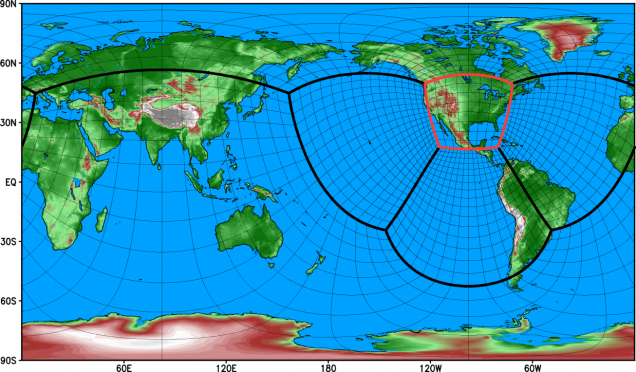Global/regional climate change and human activities
Land-use/land-cover change (LULCC) is an important driver of climate change (Fig. 1). By altering the biophysical and biogeochemical properties of the surface, LULCC results in changes in surface energy balance, surface states such as temperature and moisture content, the dynamics/thermodynamics of the atmospheric boundary layer, etc. These changes can have impacts at multiple scales, ranging from local to global. Understanding these changes has many important implications for food security, energy production, health conditions, climate adaptation and so on.
Figure 1: Transitions among different land use types (courtesy: Elena Shevliakova).
Using the HIgh Resolution Atmospheric Model (HiRAM) developed at the Geophysical Fluid Dynamics Laboratory (GFDL) with a stretched global grid (see Fig. 2), we conducted simulations to investigate the impact of LULCC over the continental United States. This is an on-going project and considers the urban land use impact, which has often been neglected. This is made possible by the newly-developed LM3-UCM as described here. These ultra-high resolution simulations will not only help understand the impact of LULCC quantitatively; more importantly, they will provide insights into the mechanism through which LULCC modifies the climate.
Figure 2: Grid configuration of HiRAM for examining LULCC over the continental US (courtesy: Lucas Harris).

